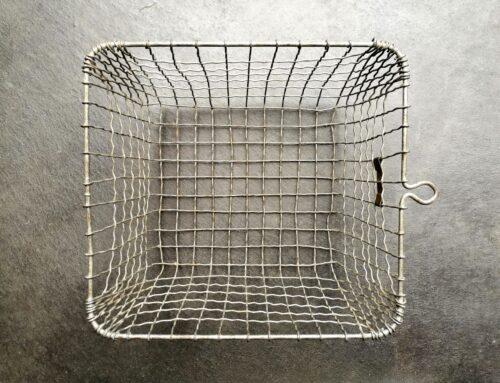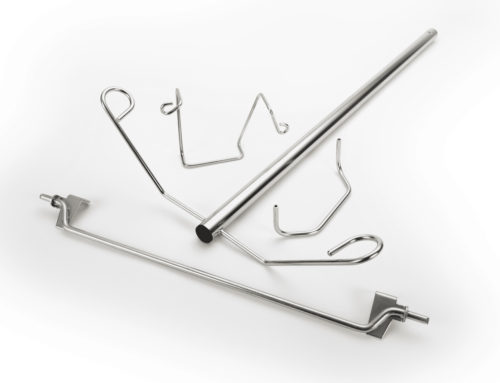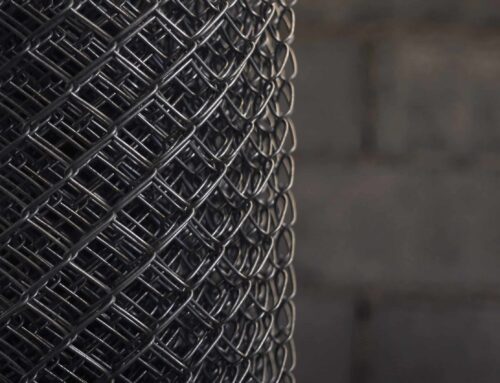Wire forming is a manufacturing method that involves converting metal wires into more useful shapes and designs. These designs provide other metal essentials such as:
- Springs
- Retaining rings
- Fasteners
- and a lot more
The wires include strands that users can turn into coils once prepared. These coils have a round cross-section and can have a flare or a square shape. You may even find these metal wires in trapezoidal and rectangular cross-sections.
There’s a variety of different diameters that you might find in the wire forming, but the largest one is 0.50 inches or 12.7 mm.
However, the ones with relatively higher diameters (between 10 mm and 100 mm) are called rods. You will also find some larger ones called the round bar stock. However, all these diameter and size differences are arbitrary, as the rods may be called wires and may be used in wire-forming methods.
How Does It Work?
Before the wire formation completes, it must go through a die to have the dimensions required by the manufacturers. There’s a die-ing tool that has a funnel-like start and ends at a narrower bottom.
The wire gets pulled out in the process, which forces the sides to shrink, reducing its diameter. However, the force needs to be calculated, or the wire may break or bend. Therefore, manufacturers must run these wires through different dies until the required diameter and dimensions are complete.
The wire forming process takes a draw wire and makes it straight after passing it through different rollers. The manufacturers also have to use tools to give the metal wire more shape.
A bent pin may be the perfect example of wire forming. There’s a tool that creates the angle needed before segmenting it. With bent pins, the wire-forming process may also use a die to punch or drill a hole in the wire and a cutting tool that chamfers the ends.
To help you better understand its working, we will talk about the manufacturing process quickly. Here’s what it includes:
Upsetting
The first step includes deforming the wire with compression towards its axial to add shape to the wire.
Extrusion
Next, the wire gets more shape, for which the manufacturers run it through an area with a narrower size than the wire’s size.
Swaging
Swaging includes two phases: shaping the wire by running it through the holders, and deforming the wire by applying the tool at the right angle towards the axial angle, also referred to as side pressing.
Bending
Next, manufacturers add more angles to the wire with manual bending. However, the manufacturers may use stamping for commercial production.
Stamping
The stamping process includes special tools called dies, which can bend the wires at particular points.
Twisting
The twisting lets manufacturers combine multiple wires and form specific shapes to take advantage of the spring-back shapes created.
Stretching
Once all these steps are complete, the wires are stretched and thinned out using opposing force. However, it’s notable that the wire is only elongated along a particular plain. Excessive stretching can destroy the wire’s design and cause necking. It is when the thinning becomes focused on one particular point, weakening the wire structure.
CONTACT ACME WIRE PRODUCTS
Acme Wire Products has designed, recommended and manufactured custom wire components for customers in many diverse markets. We offer the benefit of our almost 50 years’ experience in the manufacture of component parts for hardware, medical & lab equipment, cable management, sporting goods, firearms, furniture, guarding, HVAC, pharmaceutical, automotive, optical and food service and processing industries.
Acme Wire’s designers work with our customers to create a wire component that will provide the greatest functional value. The design of wire products such as levers, handles, supports, rings, guards, baskets, trays, grids, frames, shelves are limited only by one’s imagination (and the limitations of technology).
Contact Acme Wire Products to assist you in determining the wire product best suited to your requirements!
Call Acme Wire Products at 1-800-723-7015 to get started.
Acme Wire Products Co., Inc. – Mystic, CT
Fax – 860-572-9456





